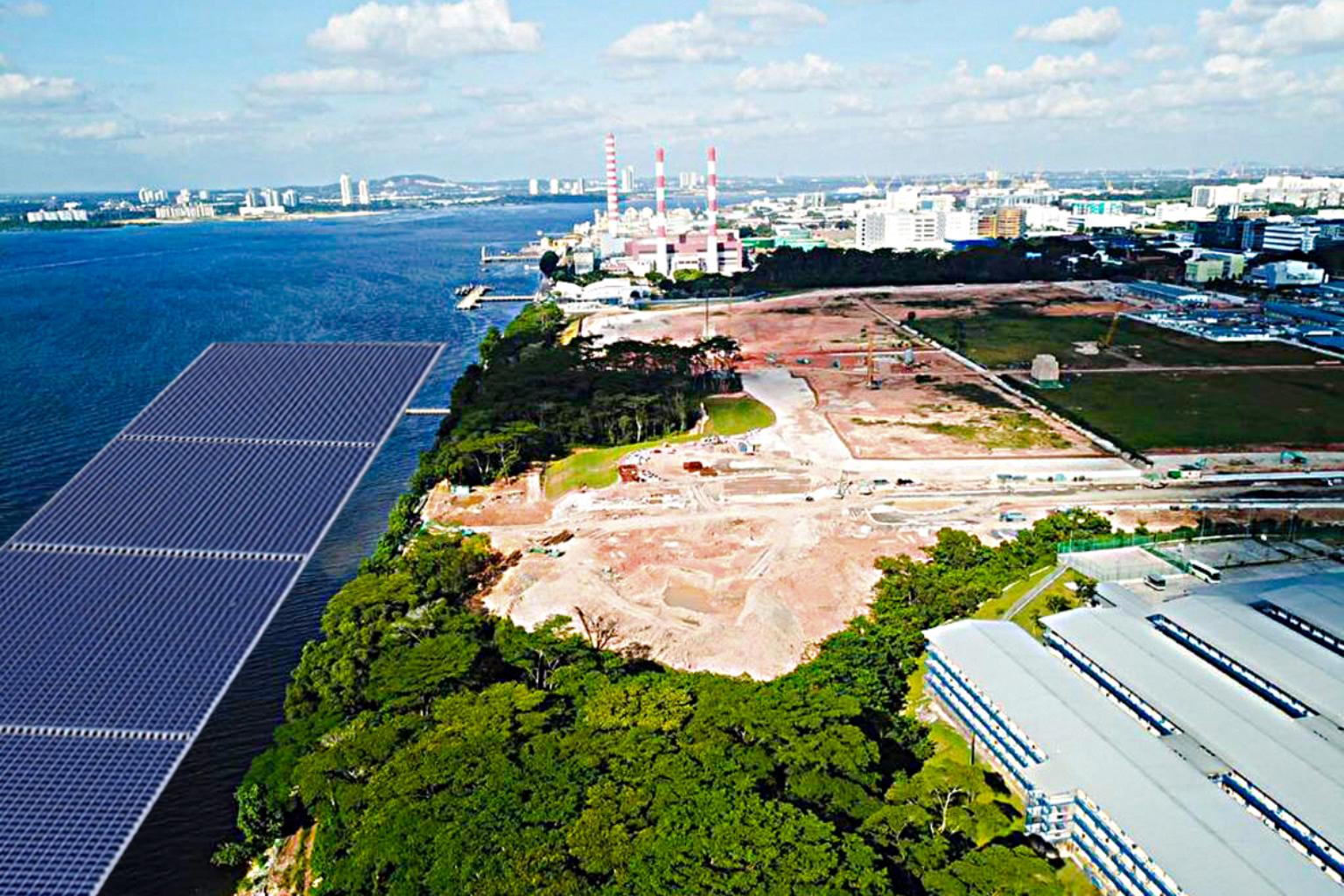Sun seeker at sea: One of the world's largest offshore floating solar systems will soon be soaking up the rays along the Strait of Johor
Sign up now: Get ST's newsletters delivered to your inbox

An artist’s impression of the offshore floating photovoltaic system to be located north of Woodlands Waterfront Park.
PHOTO: SUNSEAP GROUP
Chang Ai-Lien
Follow topic:
One of the world's largest offshore floating solar systems will soon be soaking up the rays along the Strait of Johor, north of Woodlands Waterfront Park.
Developed by sustainable energy provider Sunseap Group, the 5MW-peak system will generate about 6,388MW-hours of renewable energy annually, equivalent to powering about 1,250 four-room flats, with a reduction in greenhouse gas emissions of about 2,600 tonnes every year.
The 5ha system will soon be installed, and is set to be completed later this year.
In land-scarce Singapore, the success of a sea-based floating photovoltaic system could lead the way for more such projects to tap energy from the sun here and in the region.
While floating panels are more expensive to install, they are more efficient because the water's cooling effect helps reduce thermal losses and extends their life, say experts.
Said Sunseap's chief executive and executive director Frank Phuan: "Sunseap is actively looking for alternative areas to extend the overall deployment of solar systems in Singapore.
"We are currently looking at areas such as reservoirs and coastal waters in Singapore, where there is a substantial area to achieve a gigawatt capacity via solar systems."
But getting Sunseap's floating solar project off the ground was not easy, said project manager Tan Ying Te, who has been working on the project from the time it was just an idea in 2015.
"We spent about two years looking for the ideal site, as some locations were not suitable because of issues such as security and environmental concerns," he said.
The site had to be close to shore in a sheltered area so it would not be battered by strong waves, and for it to be accessible for checks and repairs, for instance.
Then there was the issue of the corrosive effects of seawater, and how to prevent marine growth such as barnacles and mussels from damaging the structure.
So the platform had to be tougher than those in reservoirs or lakes to withstand tougher conditions at sea.
One by one, the problems were smoothed out with solutions such as a modular design, which helped the gigantic structure move with the waves, and the use of glass panels to reduce corrosion.
"We set out wanting to do something challenging, on a grand scale, which could show the way forward to achieving solar energy growth for Singapore and beyond," said Mr Tan.
A key part of protecting the planet from global warming involves shifting from the use of fossil fuels to renewable energy.
Singapore is committed to reducing carbon emissions intensity by 36 per cent from 2005 levels by 2030, and the country's high levels of solar exposure make solar power a viable option.
The growing clean energy sector, including solar generation, can also be a boost for the economy.
New investments in Singapore's fast-growing clean energy industry will generate $180 million in annual business spending and create about 1,000 professional jobs in the next five years, Minister for the Environment and Water Resources Masagos Zulkifli said last year.
With land at a premium, solar power companies in South-east Asia are also looking at the viability of floating panels in lakes, dams, reservoirs and the sea.
Thailand, for instance, has said it plans to invest in about 16 floating solar plant projects across nine dams in the country.
Sunseap, too, has plans to supply floating solar plants to other countries.
"The wider vision is for us to be a mobile energy supplier, and to be able to easily deploy a solar system anywhere," said Mr Tan.

